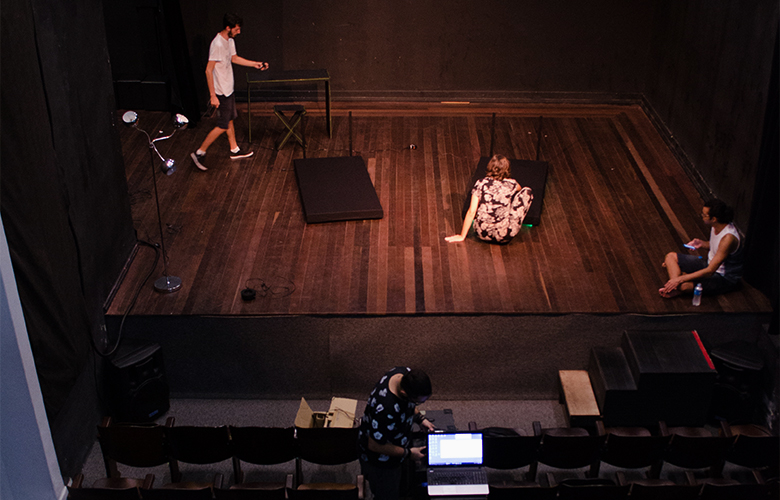
From the We See You movement to the formation of the Asian American Performers Action Coalition (AAPAC), the American theater is facing a moment of reckoning when it comes to representation. While taking steps to increase equity, launching programs focused on diversity and inclusion, and working toward parity on- and off-stage in the American theater has taken a forefront position in the national conversation, the essential issues of underrepresentation have real-world, economic consequences for theater professionals at every level.
Broadway pulls in over 16 billion dollars annually, with a broader expanse of employees including artistic, technical, and administrative staff. With an impact nearly on par with other economic sectors driving growth in the U.S. (the arts and cultural sector contributed $804.2 billion to the GDP in 2016), theater plays a substantive role in the telling of the American story. That story, however, has often cast BIPOC artists in background roles, or, as has been the case far too often, ignored them completely.
That proxy erasure has prompted a broad coalition of activism within the artistic community, with much of the discussion centered on the staggering inequities revealed when available roles, creative boards, and directorial staff are analyzed for representation. If work begets work, and prospects are in direct relation to the length of one’s curriculum vitae, an environment wherein fewer BIPOC individuals inhabit the offices and stages of American theaters instigates a situation of dire economic disadvantage for those same artists and administrators.
The median net worth of non-Hispanic white households was $143,600 in 2016, the median net worth of Black households was $12,920, and the median Black household is reported to have less than 11 percent of the wealth of the comparable median White household. Additionally, according to a study by the National Women’s Law Center, Latinas in the U.S. face a “lifetime wage gap,” having to work approximately 22 months to achieve pay equity with what white men are paid in just twelve months. Within the theater community, that wage gap is also apparent in the availability of roles: white males account for nearly 80% of roles on stage, according to a joint study by AAPAC and Quartz.
Every one of those roles represents a paying job for a journeyman actor, which bears out considerably in terms of access to employment: if each of those roles were under a union contract, the minimum weekly pay would be $2,034. For every 100 roles, that represents over $650,000 of gross annual revenue that no actor of color (talent and hard work notwithstanding) could reasonably access. Their race, quite simply, makes a lucrative career in their chosen profession more difficult.
Additional factors add to this gap, creating what can only be called a wealth chasm: a large group of people within minority groups have not saved more than $10,000 to account for unemployment or disasters (such as a global pandemic) that shut down theaters. They are significantly less likely to own assets that can be leveraged and more likely to spend the bulk of their earnings on necessities over savings and investments. Unpaid internships favor talent with family ties or connections which can cover expenses during unpaid work time, and historical underpinnings of the racial wealth gap often make that impossible for BIPOC individuals. A study in the American Sociological Review also showed how diverse candidates suffer in terms of professional networking: they tend to be less able to generate leads from within their organic networks, and leads they do generate are often less able to produce lasting benefits in terms of upward mobility. Further complicating matters, minority actors are often limited to the roles which specifically call for a certain ethnicity, meaning career prospects can be narrowed or embargoed entirely by a choice of playwright or material for an upcoming season.
With all of those mitigating factors in concert with the auxiliary expenses related to the acting profession (headshots, classes, and casting website memberships), the BIPOC artist’s access to gainful employment is a precarious route to an often elusive goal.
The economic weight of underrepresentation is multifaceted and far-reaching. The fiscal benefits of intentionally featuring diverse voices, on the other hand, have been proven time and again. Issues of accessibility are especially vexing when one takes into account the draw of BIPOC casts, and how that draw reflects on earnings within the industry. Women purchase 70% of theater tickets while comprising 60%-70% of its audience, and the breakthrough successes of non-traditional casting-based projects like Hamilton speak for themselves. Still, gender gaps and a lack of diversity in the arts run counter to the best practices being embraced by the corporate world, where a link between diversity and performance is an all but accepted facet of doing business. Companies in almost every sector have embarked on remedying the lack of diversity in boardrooms and managerial positions, with tastemakers like the Fortune 500 list including DEI as criteria for consideration: a tacit understanding that inclusion and innovation are inextricably linked.
With an uncertain future brought about by an unprecedented pandemic, the only surety is the need for innovative ideas to revive the American stage. Diverse casting has a proven model of box office success in film, inclusive boardrooms have given rise to marked performance improvement, and with an audience skewing younger than ever, the most innovative step the theater industry can take to meet the moment is to tell the story of polyglot, multicultural America. With diverse casting promising an economic benefit to theater and artists alike, avoiding inclusivity might be a dated habit that post-pandemic industries can’t afford to abide by.
Asian Representation on Broadway
Black Lives Matter In The UK Music Industry



Joshua Noble is writer, actor, and producer based in Los Angeles, California. In addition to his career in TV and film, he is a founding producer of The American Playbook, a series of conversations and new works highlighting historically underrepresented voices, and currently serves as Director of the National Actors’ Retreat.
Read Full Profile© 2021 TheatreArtLife. All rights reserved.

Thank you so much for reading, but you have now reached your free article limit for this month.
Our contributors are currently writing more articles for you to enjoy.
To keep reading, all you have to do is become a subscriber and then you can read unlimited articles anytime.
Your investment will help us continue to ignite connections across the globe in live entertainment and build this community for industry professionals.